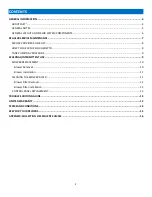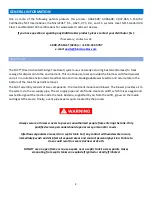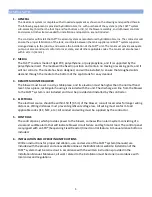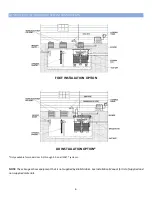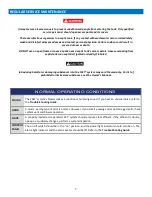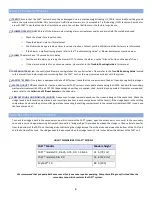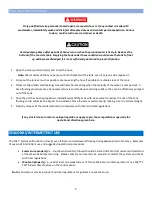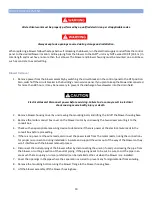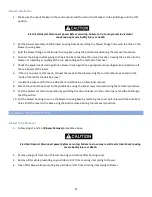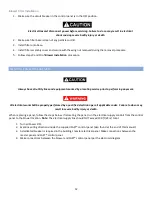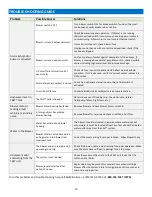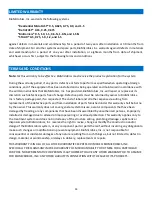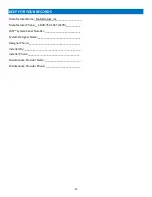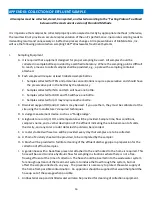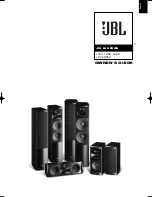
17
K.
Latex gloves and eye protection will be provided.
II.
Sampling techniques
A.
A grab sample must be taken from a free-flowing effluent pipe. The pipe will most likely be located
in a distribution box or pump chamber downstream from the treatment unit.
Note:
It is very
important that the pipe be cleaned (see D).
B.
If flow is not present, connect the garden hose to an outdoor faucet. The hose should be inserted
into the wastewater system far enough upstream of the treatment system to induce the flow
through the system, but not affect the sample collected in any way. For most residential units,
this would be in the inlet to the septic tank. For this location, the hose should be placed in the inlet
tee to best simulate influent into the septic tank. The hose should
not
be allowed to run at this
location longer than 10 minutes.
C.
Put on protective eye wear and latex gloves.
D.
To the extent possible, use the brush to clean the discharge pipe of attached growth that may
dislodge during the process of collecting. Rinse the pipe with the garden hose.
Note:
If the pipe is not accessible for cleaning in this manner, the sampler must avoid knocking
loose large solids that could contaminate the sample from the pipe.
E.
Place the end of the garden hose in position to add water to the first compartment – NOT the
reaction chamber – of the septic tank (see Step B). Take care to not touch the sewage with the end
of the hose. Turn the faucet on.
F.
After the effluent has been flowing out of the pipe for a minimum of 10 minutes, place the
collection container into the stream of effluent and rinse any collection containers (including
sample bottles) that will contain effluent.
DO NOT
rinse TKN and ammonia sample bottles that
contain a preservative.
G.
If a free-flowing sample cannot be taken from a pump chamber, then the operator must determine
if the contents of the pump chamber are representative of the effluent. There are three
components of the evaluation of whether the sample will be representative:
(i) Determine if there are settable solids in the bottom of the pump chamber (using a sludge
measurement). If there are any solids
, t
hen the pump chamber must be cleaned out before a
representative sample can be taken.
(ii) Measure the dissolved oxygen in the pump chamber. The dissolved oxygen in this chamber
must be above 1.0 mg/l for the sample to be representative of an aerobic effluent. If the dissolved
oxygen is below 1.0 mg/l, then the pump chamber should not be used for sampling.
(iii) Collect a sample from the pump chamber and compare it to a sample from the reaction
chamber. Samples collected from a pump chamber should be taken from six inches to a foot below
the surface. This will help to eliminate any floatable solids from affecting the sample. This sample
should be compared to a sample collected off of the spray from the reaction chamber. This sample
should be allowed to settle for 5 minutes and then compared to the sample from the pump
chamber. If the clarity of the two samples is similar, then it can be assumed that the samples are
similar. If the pump chamber sample is cloudy or obviously darker than the settled aeration
sample, then the pump chamber sample should not be used as a representative sample. If the
Содержание HighStrengthFAST 1.0
Страница 2: ...2...

